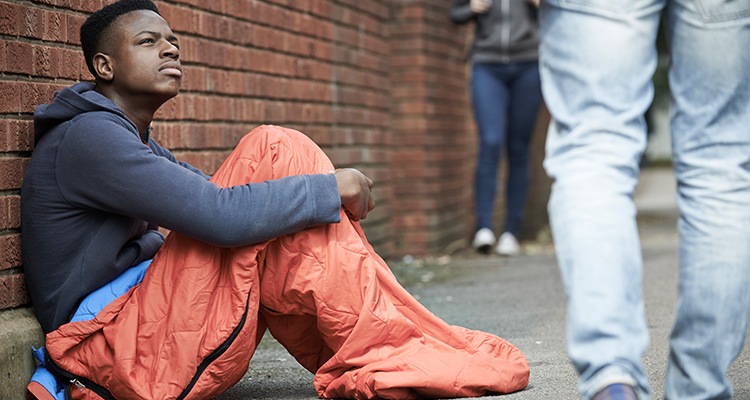Inequality and Violent Crime: Understanding the Nexus
Inequality, in its multiple dimensions, and violent crime have been subjects of enduring interest to scholars, policymakers, and the general public. Inequalities, whether based on income, education, or other factors, can create significant societal stresses, which some argue can lead to increases in violent crime.
The relationship between inequality and violent crime has been explained through several theoretical lenses. First, relative deprivation theory suggests that people engage in crime when they perceive a gap between their expectations and achievements. When individuals see others enjoying better socioeconomic conditions, feelings of deprivation and frustration arise, potentially leading to crime (Blau & Blau, 1982). Second, routine activity theory, though not focused on inequality per se, posits that for a crime to occur, there needs to be a motivated offender, a suitable target, and a lack of capable guardian (Cohen & Felson, 1979). It is not difficult to imagine how economic inequalities might increase the number of motivated offenders or indeed suitable targets. Third, social cohesion theory notes that in societies marked by deep inequalities the bonds that tie people together in shared purpose (i.e., social cohesion) may weaken. Without strong social ties, community members might be less likely to look out for one another, leading to an increase in crime (Sampson, Raudenbush, & Earls, 1997).
However, empirical evidence on the relationship between inequality and violent crime have been somewhat mixed.
Some studies have shown that areas with higher levels of income inequality tend to have higher rates of violent crime (Kelly, 2000). For instance, the work of Fajnzylber, Lederman, and Loayza (2002) using international data showed that countries with higher levels of income inequality also experienced higher homicide rates. In contrast, other studies have indicated that the relationship might be more nuanced. For instance, Choe (2008) found that the connection between inequality and crime can be influenced by other societal factors, like the strength of law enforcement or social safety nets.
The effect of inequality on crime might also vary depending on the type of inequality (e.g., income vs. education) or the specific context of a country or region. In some contexts, inequality might have a stronger influence on property crime than on violent crime (Brush, 2007).
It is important to note that inequality’s tentacles stretch beyond violent crime. It affects mental health, perpetuates cycles of poverty, and can even influence voting patterns. In societies with pronounced inequalities, mistrust can brew, leading to divisions and societal unrest. Such societal rifts can be fertile grounds for radicalization, as marginalized groups seek outlets for their frustrations.
Given the potential connection between inequality and violent crime, it’s critical for policymakers to consider strategies to address underlying socioeconomic disparities. By promoting policies that aim for inclusive growth, societies can potentially reduce the adverse impacts of inequality. This might include measures like progressive taxation, access to quality education, and job creation. Further, ensuring that vulnerable populations have access to healthcare, unemployment benefits, and social services can mitigate feelings of relative deprivation and deter engagement in crime (Wilkinson & Pickett, 2006). Additionally, strengthening community ties can combat the eroding effects of inequality on social cohesion. Programs that encourage community interaction, mentoring, and neighborhood watch initiatives can play a role here (Morenoff, Sampson, & Raudenbush, 2001).
While the relationship between inequality and violent crime is complex, the consensus is that socioeconomic disparities can contribute to societal stresses that may, under certain conditions, result in higher crime rates. Tackling these disparities, both in terms of economic policies and community initiatives, can be a vital step towards creating safer, more cohesive societies.
References
Blau, J. R., & Blau, P. M. (1982). The cost of inequality: Metropolitan structure and violent crime. American Sociological Review, 114-129.
Cohen, L. E., & Felson, M. (1979). Social change and crime rate trends: A routine activity approach. American sociological review, 588-608.
Sampson, R. J., Raudenbush, S. W., & Earls, F. (1997). Neighborhoods and violent crime: A multilevel study of collective efficacy. Science, 277(5328), 918-924.
Kelly, M. (2000). Inequality and crime. Review of Economics and Statistics, 82(4), 530-539.
Fajnzylber, P., Lederman, D., & Loayza, N. (2002). Inequality and violent crime. The Journal of Law and Economics, 45(1), 1-39.
Choe, J. (2008). Income inequality and crime in the United States. Economics Letters, 101(1), 31-33.
Brush, J. (2007). Does income inequality lead to more crime? A comparison of cross-sectional and time-series analyses of United States counties. Economics Letters, 96(2), 264-268.
Wilkinson, R. G., & Pickett, K. E. (2006). Income inequality and population health: A review and explanation of the evidence. Social science & medicine, 62(7), 1768-1784.
Morenoff, J. D., Sampson, R. J., & Raudenbush, S. W. (2001). Neighborhood inequality, collective efficacy, and the spatial dynamics of urban violence. Criminology, 39(3), 517-558.

